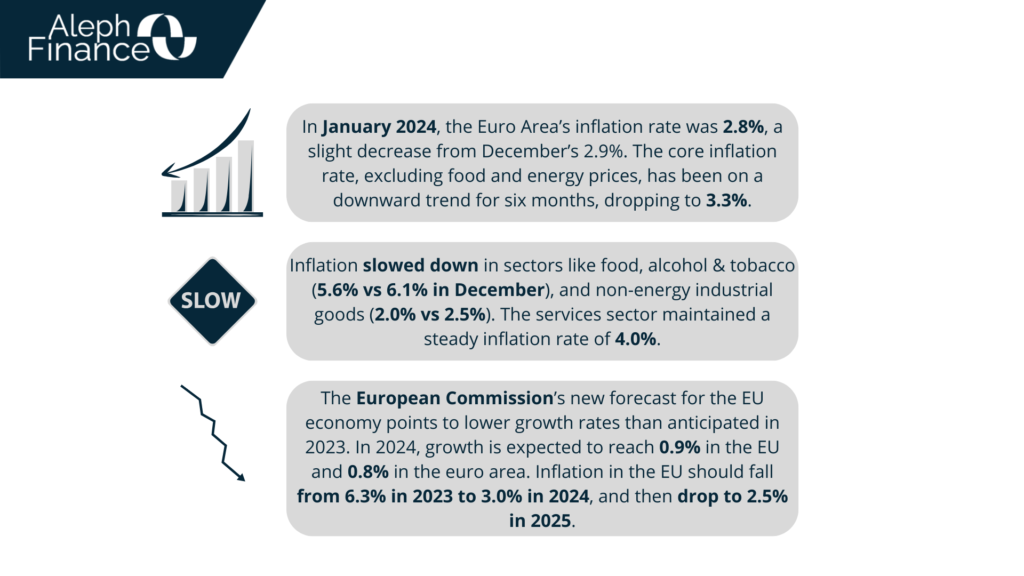In January 2024, the Euro Area saw a slight dip in its inflation rate, settling at 2.8%, a marginal decrease from December’s 2.9%. This figure still surpasses the European Central Bank’s target of 2.0%. The core inflation rate, which excludes the unpredictable food and energy prices, has been on a downward trend for six consecutive months, dropping to 3.3% – a low not seen since March 2022.

Inflation experienced a slowdown in certain sectors such as food, alcohol & tobacco (5.6% vs 6.1% in December), and non-energy industrial goods (2.0% vs 2.5%). However, the services sector maintained a steady inflation rate of 4.0%. Energy prices saw a less rapid decline, moving from -6.7% to -6.1%.
On the other hand, the Consumer Price Index (CPI) in the Euro Area decreased to 123.60 points in January from 124.05 points in December of 2023. The CPI in the Euro Area has averaged 92.33 points from 1996 until 2024, peaking at 124.54 points in October of 2023 and hitting a record low of 70.97 points in January of 1996.
In terms of monthly changes, consumer prices in the Euro Area declined by 0.4% in January 2024, following a 0.2% increase in December. This decrease was largely due to a drop in services (-0.1%) and non-energy industrial goods (-2.4%). Conversely, prices of food, alcohol & tobacco, and energy saw increases of 0.9% and 1.2% respectively.
The European Commission’s new forecast for the EU economy points to lower growth rates than anticipated in 2023. Inflation will also speed up its current downward trend this year. In 2024, growth is now expected to reach 0.9% (from 1.3%) in the EU and 0.8% (from 1.2%) in the euro area. In the meantime, inflation in the EU should fall from 6.3% in 2023 to 3.0% in 2024, and then drop to 2.5% in 2025.


